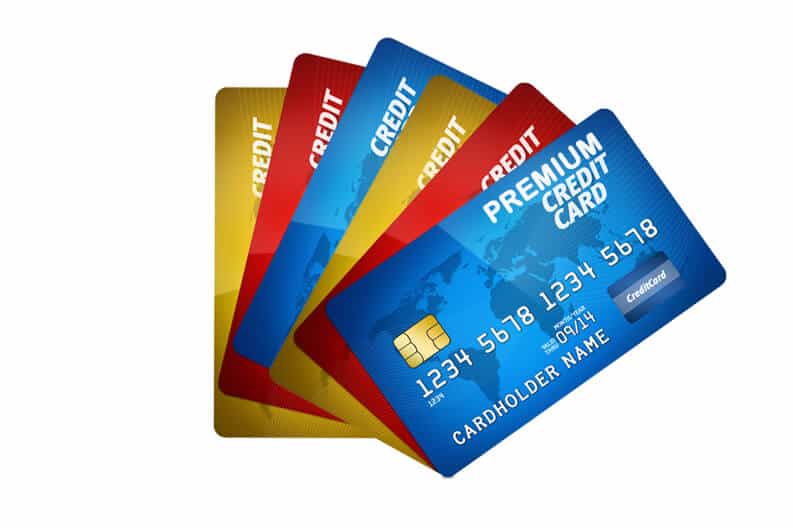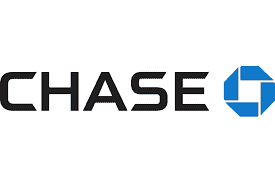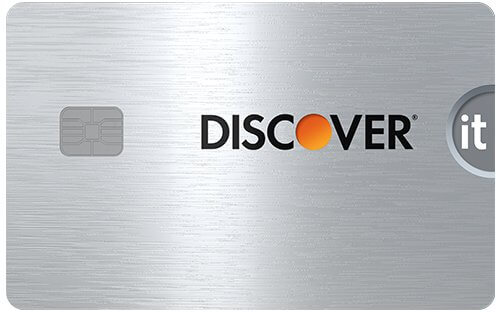Best Credit Cards to Consolidate Credit Card Debt in 2020
If you’re currently holding debts across one or more credit card, then you’re likely being hit with interest payments – each and every month. As such, it is well worth exploring how you can consolidate these debts so that you can reduce your interest payments, or better – stop paying interest, period.
One of the most effective ways of doing this is to obtain a 0% balance transfer credit card, with the view of consolidating your outstanding debts on to your newly acquired card. In doing so – and as long as you meet your minimum monthly payments, you can benefit from 0% interest payments for up to 21 months.
If this sounds like something you are interested in doing, be sure to read our comprehensive guide on the best credit credits to consolidate credit card debt. We’ve covered how the process works, what you need to do, and most importantly – the best 0% credit card providers that will allow you to consolidate your outstanding balances.
What is debt consolidation?
Before we explore debt consolidation with respect to outstanding credit card balances, it is important to first have an understanding of what we mean by “debt consolidation”. In its most basic form, the process of consolidating your debt comes with the overarching goal of reducing your interest payments. This is achieved by paying off your outstanding debts with a new debt – such as a loan.
In order to understand how the process works, let’s run through a quick example.
- Let’s say that you currently have outstanding debts with Chase and Wells Fargo, amounting to $5,000 and $9,000, respectively.
- As such, your total outstanding debt is $14,000.
- The key problem with your outstanding debts is that you are paying a whopping 25% APR in interest, which is crippling you each and every month.
- Therefore, you decide to engage in a debt consolidation plan. You subsequently take a NEW loan out with Ally Bank for $14,000 at an APR rate of just 10%.
- This means that your loans with both Chase and Wells Fargo have now been settled in full, albeit, you now have a new loan agreement with Ally Bank.
As you will see from the example above, although technically you still owe the same amount ($14,000), you have successfully reduced your APR rate from 25% down to 10%. This is a perfect example of consolidating your debt.
What is credit card debt consolidation?
Although the above debt consolidation example allowed us to reduce our interest payments from 25% APR to 10% APR, the process in the credit card arena is significantly more beneficial. The key reason for this is that you stand the very real chance of reducing your APR rate to 0%, for a set period of time.
In order to achieve this goal, you will need to obtain a 0% balance transfer card. Before we unravel the ins and outs of a balance transfer, let’s make sure that we understand how debt consolidation works in the context of credit cards. Once again, we’ve listed a detailed example below.
💳 Let’s say that you currently have outstanding credit card balances with both Citi and Bank of America.
💳 You are currently paying 18% APR on both cards, repayable on two different dates throughout the month.
💳 To reduce your interest payments, you decide to engage in a credit card debt consolidation plan.
💳 As such, you take out a NEW credit card with Capital One, which offers 0% interest for the first 15 months.
💳 Your outstanding balances with both Citi and Bank of America have now been cleared in full, and subsequently transferred to your NEW Capital One credit card.
💳 In doing so, you get to enjoy 0% interest payments for a whopping 15 months – as long as you always meet your minimum monthly payments.
Balance transfer cards for debt consolidation
✔️ Balance Transfer: In its most basic form, a balance transfer means that you transfer outstanding debts from one credit card to another. For example, if you transferred $10,000 worth of debt from a Citi credit card to that of a Capital One credit card, this would be known as a balance transfer. Effectively, you’ve paid off an old debt with a new debt agreement.
✔️ Limits: Following on from the above point, as you will be taking out a new credit card, you need to consider what credit limit the provider in question will offer you. In an ideal world, you will want to obtain enough credit to pay off your outstanding credit card debts in full. For example, if you currently hold $15,000 worth of debt across 4 different credit cards, and you are able to get a $20,000 limit on your new balance transfer card, then this is sufficient to achieve debt consolidation in full.
✔️ 0% Period: As we noted earlier, it is crucial that you only obtain a new credit card for the purpose of debt consolidation if the APR rate on offer is 0%. There are heaps of credit card providers that offer 0% balance transfers, so choice is plentiful. However, you also need to assess how long the 0% interest period will last for. Ideally, you want to obtain a card with the longest 0% period, so that you have sufficient time to clear your debts in full before the offer expires.
✔️ Transfer Fee: Often overlooked in the credit card debt consolidation arena, you also need to make some considerations regarding transfer fees. This is the fee that you need to pay to transfer your old balances to your new credit card provider. In the US, this can range from 0% up to a whopping 5%, so make sure you bear this in mind. For example, if you were looking to transfer a total of $15,000 to your newly obtained balance transfer card, and the underlying transfer fee was 4%, then you would pay $600 in fees.
The Pros
- Reduce your interest payments down to 0%
- Some 0% balance transfer offers last for upto 21 months
- Gives you sufficient time to clear your outstanding balances in full
- Improve your credit score when you clear your old credit card debts
The Cons
- Only suitable if your credit is good or excellent
- You’ll lose your 0% rate if you are late with a repayment
Criteria used to rank the best credit cards
❓ Only 0% balance transfers are considered
❓ Credit cards with a reasonably high credit limit
❓ What percentage of your credit card limit you can use on balance transfers
❓ How long the 0% interest offer lasts for
❓ The standard APR rate on the card once the 0% offer expires
❓ Eligibility requirements
Top 5 debt consolidation credit cards
Without a shadow of a doubt, the Citi Simplicity credit card wins the battle of the best debt consolidation credit card – at least in terms of the longest 0% introductory rate. By obtaining the card, you’ll be able to get 0% interest on your balance transfers for a highly competitive 21 months. This will give you more than enough time to clear your debts in full.
Take note, you will need to have an excellent credit rating to get the Citi Simplicity credit card. If you do, then you’ll also benefit from zero annual fees, and you even get to choose your monthly repayment date. This is useful if you receive your monthly salary on a specific date, and want your Citi Simplicity repayments to come out on the same day.
In terms of the specifics, the Citi Simplicity credit card comes with a standard APR rate of between 16.74% to 26.74%, depending on your credit profile. Most importantly, you do need to make considerations regarding the 5% balance transfer fee. This is potentially the only draw-back to the card.
Key Points:
💳 0% for 21 months
💳 5% transfer fee
💳 APR rate of between 16.74% to 26.74% once the offer expires
💳 No annual fees
💳 Only suitable for excellent credit rating
Although the Chase Slate credit card comes with a shorter 0% introductory period in comparison to Citi Simplicity, it still offers a very useful 15 months. However, the overarching benefit of going with the Chase Slate credit card is that it comes with a 0% balance transfer fee.
As such, while a $10,000 balance transfer would cost you $500 with Citi, you would pay nothing with Chase as long as you transfer your balances within the first 60 days. Much like in the case of Citi, Chase requires applicants to have an excellent FICO credit score.
There is also no annual fee to contend with, and the standard APR rate amounts to between 16.99% and 25.74%. Take note, the Chase Slate credit card does make it clear that should you miss a single monthly payment, you will instantly revert to the standard APR rate.
Key Points:
💳 0% for 15 months
💳 0% transfer fee
💳 APR rate of between 16.99% to 25.74% once offer expires
💳 No annual fees
💳 Only suitable for excellent credit rating
Although less wide-spread than the other two balance transfer credit cards that we have mentioned thus far, it is well worth considering the Discover It credit card. This is especially true if you are not in possession of an excellent credit rating, as the card accepts applicants from within the ‘Good Credit’ bracket. Nevertheless, the Discover It credit card comes with a 0% balance transfer period of 14 months, and there are no annual fees to pay.
Do bear in mind that you will need to pay a 3% balance transfer fee. As such, a $10,000 transfer would cost you $300. The ongoing APR rate that kicks in once the 0% offer expires falls between 13.99% and 24.99%. This will of course depend on your individual credit score.
It is also worth noting that the Discover It credit card comes with a tempting 5% rewards program. In a nutshell, qualifying purchases of upto $1,500 per month come with a cashback reward of 5%. However, don’t forget that the overarching purpose of obtaining the card is to consolidate your credit card debts, so try to avoid spending.
Key Points:
💳 0% for 14 months
💳 3% transfer fee
💳 APR rate of between 13.99% and 24.99% once offer expires
💳 No annual fees
💳 Suitable for good credit rating or above
In a very close fourth on our list of the best debt consolidation credit cards is that of the U.S. Bank Platinum Visa. The card comes with a very juicy 0% introductory rate for 18 months on both balance transfers and purchases. You will, however, be required to have an excellent credit rating to get this particular card. If you do, you will also need to pay a 3% balance transfer fee.
On a total balance of $15,000, this would amount to $450. As is industry standard in the balance transfer credit card arena, you won’t need to pay any annual fees. As a side note, the card also comes with cell phone protection, as well as free access to TransUnion credit reports.
Finally, if you miss a payment, or the 0% introductory rate expires, then you will pay a standard APR rate of between 14.49% and 25.49%. At the lower end, this is actually very competitive.
Key Points:
💳 0% for 18 months
💳 3% transfer fee
💳 APR rate of between 14.49% and 24.99% once offer expires
💳 No annual fees
💳 Only suitable for excellent credit ratings
The Citi Diamond credit card comes with a super competitive 0% balance transfer offer for 18 months. What we really like about the Citi Diamond credit card is that it allows you to make multiple balance transfers for upto 4 months.
For example, if three months into your introductory period you decide that you want to transfer an additional credit card over, you can do this and still benefit from the offer. Ordinarily, most credit card providers in the US limit you to just 60 days.
In terms of the fundamentals, the Citi Diamond is only suitable if you have an excellent FICO credit score. If you miss a payment, then you will instantly transition over to the standard APR rate, which ranges from 15.74% and 25.74%. You will only ascertain your individual rate once you go through the online application process.
Nevertheless, as long as you always pay your balance off in full each and every month, then the standard rate shouldn’t impact you. On the other hand, it must also be noted that the Citi Diamond credit card comes with a somewhat expensive balance transfer fee of 5%. As such, transferring $5,000 to the card would result in a $250 fee.
Key Points:
💳 0% for 18 months
💳 5% transfer fee
💳 APR rate of between 15.74% and 25.74% once offer expires
💳 No annual fees
💳 Only suitable for excellent credit ratings
How the credit card debt consolidation process works
If you’ve decided to proceed with a credit card debt consolidation plan, but you’re not too sure how to get started, we’ve listed the main steps that you will need to follow below.
Step 1: Apply for your chosen credit card
You will first need to go through the initial credit card application process with your chosen provider. By clicking on one of the above ‘APPLY NOW’ links, you’ll be taken straight to the provider’s website.
Step 2: Provide information about the credit card balances you want to transfer
Once your credit card application has been approved, you will then be asked to enter the details of the outstanding balances you would like to transfer over. Take note, although you are not required to do this straight away, you must do this within the specified time limit.
In most cases, this will be within 60 days. When you have the required information to hand, you’ll need to enter your credit card number, expiry date, and the amounts you want to transfer.
Step 3: Confirm that the balance transfers have been made
Once your outstanding debts have been transfered to your newly obtained credit card, you should be able to see the amounts displayed in your account. You should take particular note to the minimum amount that you need to pay every month, and when. Don’t forget, if you miss just a single payment, you’ll likely have your 0% introductory offer revoked.
Step 4: Set up a an electronic debit agreement
You are strongly advised to set up an electronic debit agreement with the view of making your monthly repayments automatically. This is where you give the credit card provider the authority to take your payments directly from your checking account. The payments will always come out on the same day, and the exact amount may vary depending on your current balance (for example the minimum might be 1% of your total balance).
FAQs
How much debt can I consolidate onto a credit card?
Will applying for a credit card hurt my credit profile?
Do I qualify for a debt consolidation credit card?
Should I get a loan or a credit card to consolidate my debt?
How much does it cost to transfer balances from my outstanding credit cards?
What is the longest 0% balance transfer period available?









